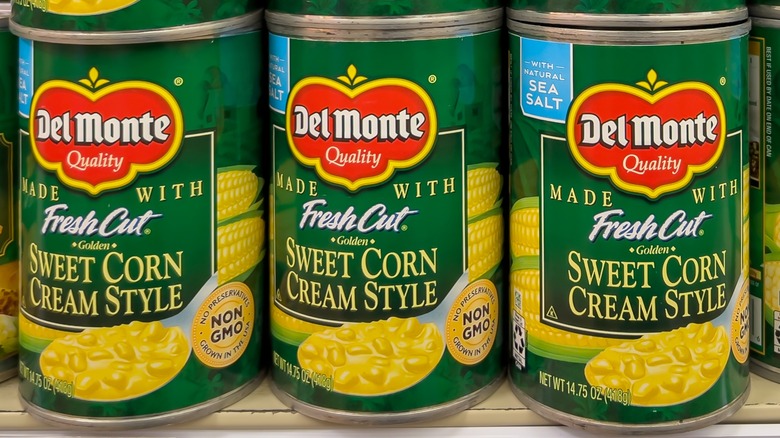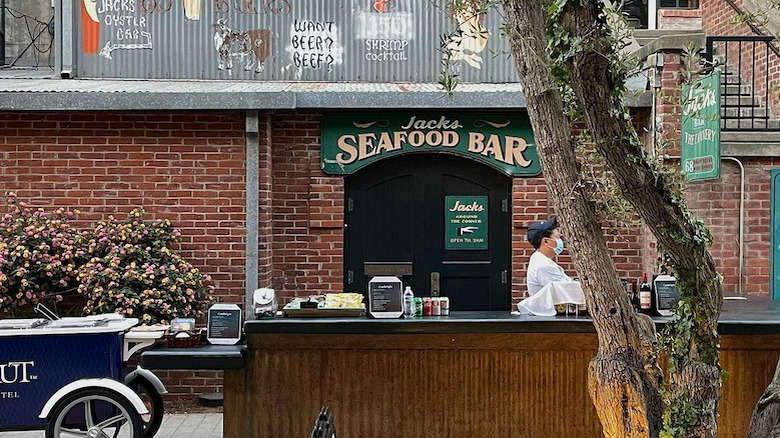The Historic San Francisco Building Del Monte Once Canned Food In
It's easy to take landmark names for granted. For instance, The Vatican is the Vatican. Why? Good question. For the record — and because we looked it up — it's named for its location on Vatican Hill, the site of an ancient settlement in Rome's Agar Vaticanus region, according to The Vatican Tickets. Other places' names, like the five-sided Pentagon in Arlington, Virginia, are more obvious. It's a pretty safe bet to assume anyone who's ever visited or lived in San Francisco is familiar with The Cannery, a tourist-friendly complex of shops and restaurants within walking distance of the City by the Bay's famed Pier 39 (via Frommer's). But why is it called The Cannery? That's an interesting story.
According to SF Tourism Tips, The Cannery was purpose-built in 1907 as a — wait for it — cannery. A historic marker erected at the site in 2004 tells the tale (via The Historic Marker Database). The California Fruit Canners Association, later Del Monte, built the cannery and a nearby warehouse to house its expanding operation. Named Del Monte Plant No. 1, it was at the time the world's largest fruit and vegetable cannery. With a staff of 2,500, the facility was capable of producing up to 200,000 units of canned food per day.
Factory turned social hub
Constructed to replace multiple canneries destroyed during the San Francisco Earthquake of 1906, according to San Francisco History, The Cannery consolidated an extensive operation in one location at a site with easy-access shipping via cargo ships traversing San Francisco Bay and direct rail connections to the San Joaquin Valley growing region. Sadly, Del Monte's three-decade run in San Francisco came to an end in 1937, a casualty of the Great Depression. The building continued to function as warehouse space for a number of smaller companies, but its lease on life was in danger of expiring by the 1960s when growing calls to demolish the building and clear the lot for new development threatened its existence.
That's when a local businessperson, Leonard Martin, stepped in with a plan to save the building, declaring his intention to "save the historic structure from the wrecker's ball and, second, to preserve this landmark, not as a static monument but as a place for people to detach themselves from everyday hustle and bustle, in an environment reminiscent of the romantic marketplaces of Europe," (via San Francisco History). And that's exactly what he did, transforming the rundown building into the social hub of dining, shopping, and entertainment it is today. As a result, Martin is often credited with jumpstarting a nationwide drive to recycle, rather than replace, historic buildings.

